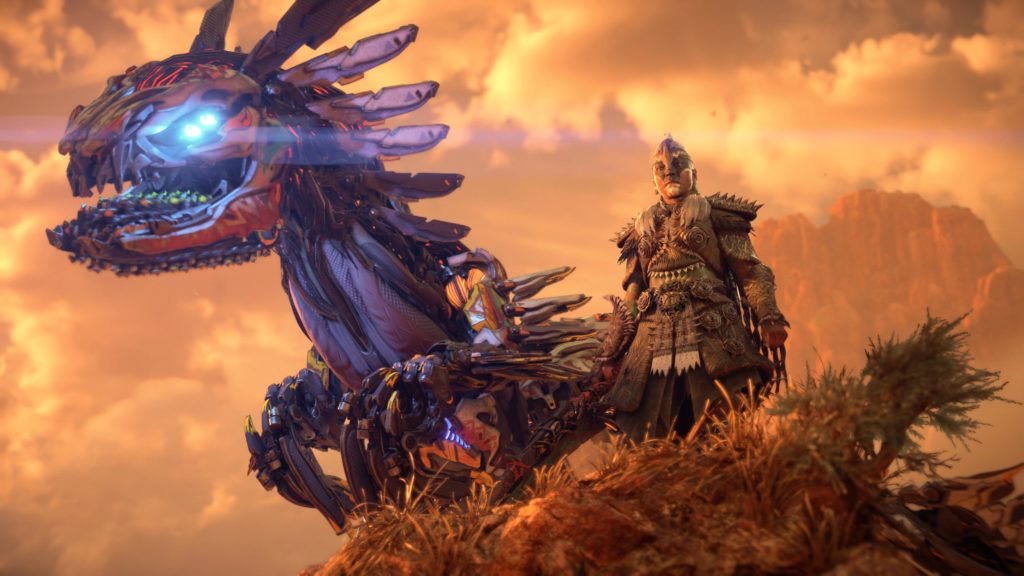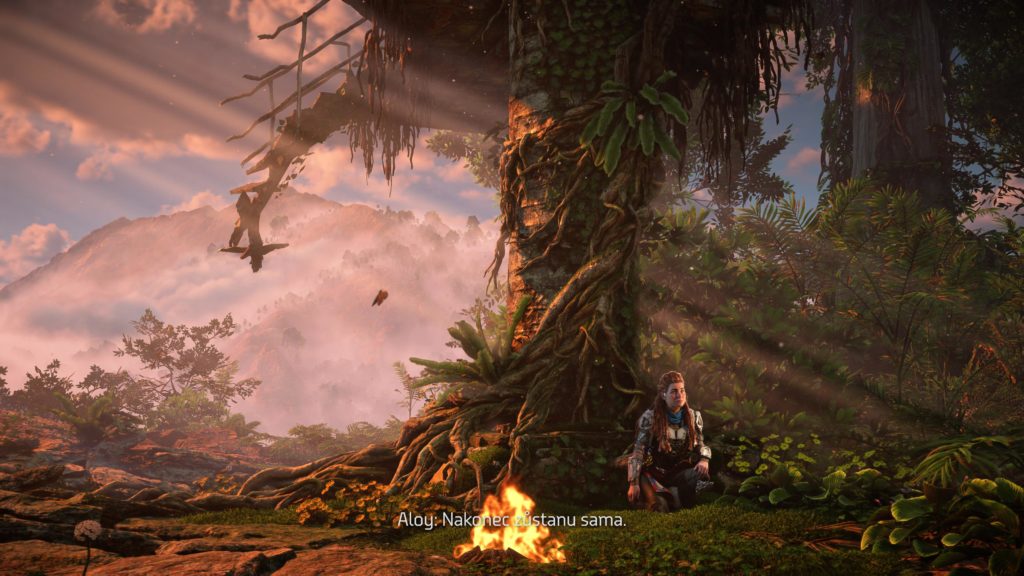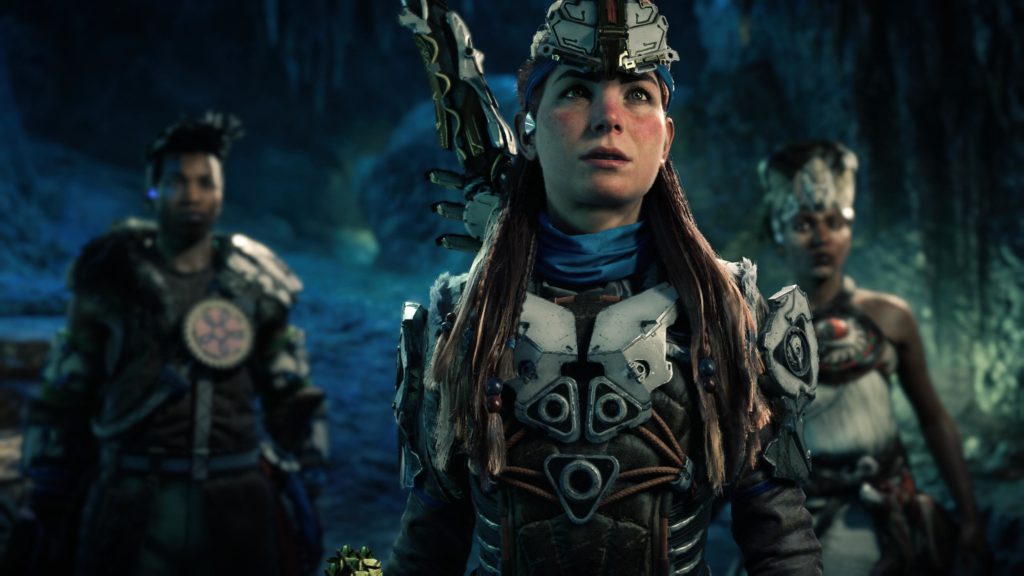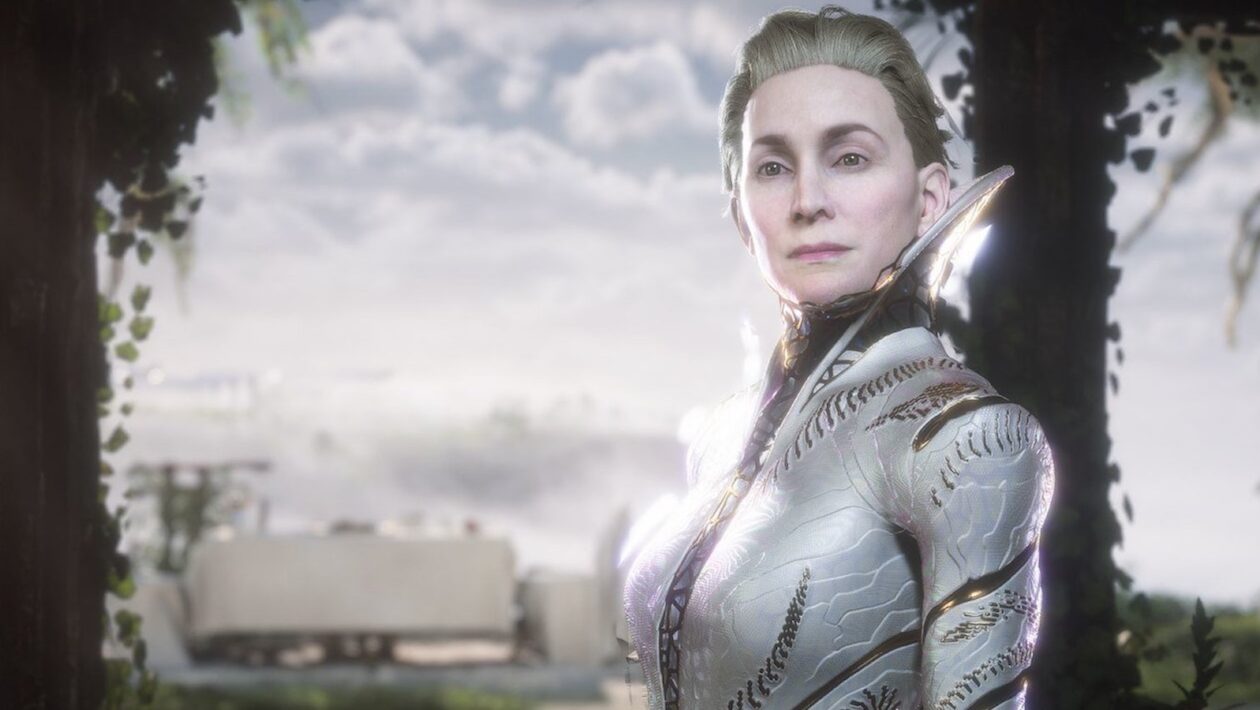They answered our questions Ben McCaw (art director) as well as Annie Kitaine (senior writer).
Zing: How important do you think it is to finish the first game before the player moves on to the second? The story seems too complicated to start from the middle.
ANNIE: We wanted Horizon Forbidden West to be a great adventure for returning players and newcomers alike. The game’s introductory parts were designed to help players understand the story in a way that doesn’t overwhelm them. This also applies to gameplay, where we wanted to give players a chance to get to know or remind themselves of Aloy’s controls and various abilities, both original and new.
Zing: After beating the first game, it seemed that the biggest revelation (what happened 1000 years ago and why robotic dinosaurs are everywhere) is over. How would you arouse interest and curiosity for a sequel in someone who might feel like the most interesting story to read in the gaming world has already been told?
BEN: We came up with most of the major storylines for Horizon Forbidden West during the development of Zero Dawn. So we knew from the start that some of our biggest revelations would come in double if we were lucky enough to get the chance to create them. So we were never intimidated by the possibility that the first game would outshine the second in terms of mysteries and secrets.

Zing: I personally felt that running the game in a familiar environment slowed down the first few hours and made it a little less interesting. However, once I got to San Francisco, the game’s story and design skyrocketed. During development, did you ever think about starting the game in a completely new place and differentiating it from the very beginning?
BEN: Using the familiar and beautiful places of the American West is part of Horizon’s DNA. Just like we had Lake Powell, Horseshoe Bend and Denver in the first game, we took advantage of places like Yosemite and San Francisco in the Forbidden West. That’s why we were happy to include Zion National Park (aka The Daunt) as one of the starting locations in the game. We needed a closed canyon to responsively introduce new players to the open world – Zion provided an iconic way to do that.
Zing: Isn’t it too tedious to explain advanced technology to the tribal people in the gaming world – Aloy, the writers – but maybe also gamers?
BEN: The contrast between the ancient world – our world – and the main Horizon companies is one of the key features of the series. The way tribes interpret and misinterpret the past is one of the most interesting aspects of our games. The Tenacts are a classic case, their entire culture based on a misunderstanding of ancient ruins. For us, these mistakes are a constant source of inspiration for new material.
Zing: How would you describe your goal for a character named Regall? Is there an intentional resemblance between her and Ela?
ANNIE: Regalla and her rebels are a vital, almost unstoppable force that Aloy constantly has to deal with in the Forbidden West. Like Aloy, Regalla relentlessly pursues her goals, but that’s where the similarities end. While Aloy wants to heal the world, Regalla is driven by hatred for the Carja tribe and is ready to burn the whole world for revenge. Angela Bassett did a great job, perfectly capturing the wild intensity we needed.

Zing: Will you be able to break the mother base in the game, which the heroes of the Forbidden West will gradually begin to use? Did you mean it as a tool to deepen the personal relationships of the characters, or something even more important?
ANNIE: One of our goals was to deepen Aloy’s relationships with other NPCs, especially her main associates. The base performs this function. He offers a place where Aloy can find out how someone is doing and learn more about each of his allies. In the first game, Aloy got used to the fate of the outcast and the fact that she was alone in everything. But now, in the Forbidden West, he is learning to accept the help of others, spending more time with them, and building deep and lasting friendships.

Zing: How did you decide which aspects of the game’s story to use for marketing trailers and which to keep under wraps? After the game is over, I must say that it contains really big surprises for the players almost from the very beginning.
BEN: As you said, we tried very hard to surprise the players and we did a lot. At the same time, we wanted to show enough of the game world to spark the imagination of the fans. This is one of the reasons we featured a character called Tilda, played by Carrie-Anne Moss, in our story trailer. We hope we struck a good balance!
Zing: Can you give an example of meaningful in-game player decisions during non-linear playthroughs? Does it shape Aloy (by choosing her responses/reactions) or are there other choices in the game world?
ANNIE: There are a number of side missions where the key decision is up to the player. This choice affects not only the outcome of the mission, but also the broader context in the context of that particular faction of the tribe. In the main and secondary missions, we looked for situations where it made sense to make a choice. Sometimes through Flashpoints, where the player can choose one aspect of Aloy’s personality, and sometimes through a key decision, as in the example above.

Zing: Does it bother you that some movie clips are too long, or do you believe in the players’ ability to enjoy those moments?
BEN: Horizon Forbidden West has a deep and emotional story that serves as the next step in Aloy’s evolution as a person. To show the growth and development of her relationship, we needed to let some moments breathe openly. So yes, we believe in the ability of our fans and players to appreciate those moments.
Zing: Was it harder to write the second game compared to the first? If yes, in what directions?
BEN: Horizon Forbidden West has a large and inviting world with lots to do and lots of secrets to uncover. Writing a crayfish-sized game is always difficult, as the sheer number of missions, actions, and words is overwhelming. This game also faced unique complications due to COVID and other factors, but I would not say that it was more difficult to write than the first part, which had to introduce a completely new world and main character.

Source :Indian TV

